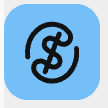
Key Insights
High yield savings accounts offer significantly higher interest rates than traditional savings accounts — often 8–12x more.
They work like regular savings accounts but usually come from online banks with fewer fees and FDIC or NCUA insurance.
These accounts are ideal for emergency funds and short-term savings, offering both liquidity and safety.
What Is a High Yield Savings Account?
High yield savings accounts are deposit accounts similar to what you would open at a traditional bank, credit union, or online financial institution. As is the case with many other types of savings accounts, all interest earned in a high yield savings account is taxable to the owner.
The difference between a high-yield savings account and a traditional savings account has to do with the interest rate and annual percentage yield you earn on your deposit. Don't know what is annual percentage yield (APY) is? Read here
How High-Yield Savings Accounts Work?
High-yield savings accounts work just like traditional savings accounts, but with significantly higher interest rates. When you deposit money into the account, your balance earns interest over time based on the annual percentage yield (APY) set by the bank or credit union. This interest is typically compounded daily or monthly and paid out regularly, often at the end of each month.
These accounts are offered by online banks, credit unions, and some traditional banks. Because online banks have lower overhead costs, they can usually offer much higher APYs than brick-and-mortar institutions.
You can deposit or withdraw money at any time, but some accounts may limit the number of monthly withdrawals or transfers. The federal government removed the federal 6-per-month withdrawal limit in 2020, though many institutions still impose their own limits/fees.
Most high yield savings accounts are FDIC- or NCUA-insured, which protects your money up to $250,000 per depositor, per insured bank/credit union, and per ownership category.
In short, you earn more on your savings by keeping your money in the account and letting the interest grow over time, without taking on the risks of investing in the stock market.
How Much Interest Can You Earn?
For example, as of August 18, 2025, the average savings account offers an interest rate of around 0.39% (FDIC). Meanwhile, a high interest savings account can offer rates of around 3.50% to 4.50% and above.
In fact, it’s not unusual for the best high yield savings account to offer rates that are 8 to 12 times higher than what you’d get in a traditional savings account.
Interest rates are subject to change at any time without notice.
Why Do People Open High Yield Savings Accounts?
Generally speaking, most people choose to open a high yield savings account to maximize earned interest while protecting their cash.
The best high interest savings accounts offer not just a high rate of return, but also come with FDIC protection that acts as a hedge against a specific or system wide bank failure.
With a mix of federal insurance protection and a higher than average yield on your deposit, a high interest savings account represents a relatively safe place to park some of your excess cash.
What to Look For When Choosing an Account
When choosing between high yield savings accounts, you’ll want to take time to compare the different features they offer. Some things to consider include APY, monthly fees, optional checking account, minimum balance requirements, maximum translation limits, overdraft fees, and the possibility of getting an ATM card.
Ready to start saving? Explore rates and perks today:
Are High Yield Savings Accounts Safe?
Yes, high yield savings accounts are generally considered very safe. Most are FDIC-insured (or NCUA-insured if at a credit union), meaning your funds are protected up to $250,000 per depositor, per insured bank/credit union, and per ownership category. Be sure to confirm your account has this coverage before depositing a large sum.
Who Should Consider a High Yield Savings Account?
High yield savings accounts are ideal for:
Emergency funds
Short-term savings goals (like travel or a down payment)
People who want higher interest without market risk
Those who want liquidity without committing to long-term investments
They are less ideal for those who:
Want long-term high-growth investments
Frequently move money in and out of accounts
Are you looking to invest in stocks, ETFs, or mutual funds
Pros and Cons of High Yield Saving Accounts
| Pros | Cons |
| Higher interest rates than traditional savings accounts | Interest rates can fluctuate |
| Easy access to your money | Not ideal for long-term investing |
| Mobile banking features | Transaction limits may apply (such as withdrawal restrictions) |
| Minimal fees | Some accounts require higher minimum balances to access top rates |
| FDIC or NCUA insured (in most cases) |
How to Get Started With a High Yield Savings Account
Compare top banks and online financial institutions.
Look for competitive APYs with low fees.
Confirm FDIC or NCUA insurance.
Review account terms like transaction limits and deposit requirements.
Open your account and begin funding it automatically (if possible).
Conclusion
If you want to create an emergency fund, but don’t want to just hide your cash under your mattress, then a high yield savings account might be the right choice for you. With high interest rates, low fees, and mobile and online accessibility features, the best high yield saving accounts combine many of the best aspects of traditional banks with cutting-edge financial services.
Before choosing an account, make sure you do the appropriate research to ensure your money works for you and not the other way around.



